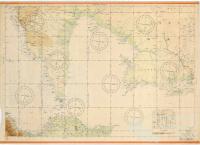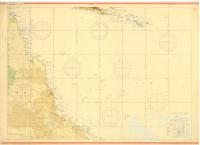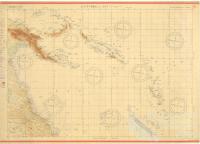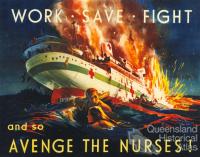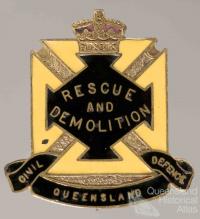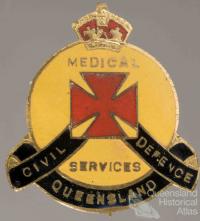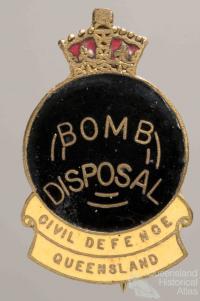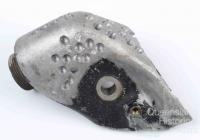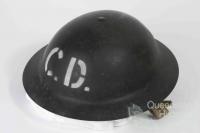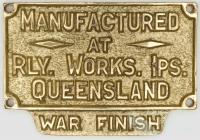- Home
- Quintessential Queensland
- Distinctiveness
- Perceptions
- Perceptions: how people understand the landscape
- From runs to closer settlement
- Geological survey of Queensland
- Mapping a new colony, 1860-80
- Mapping the Torres Strait: from TI to Magani Malu and Zenadh Kes
- Order in Paradise: a colonial gold field
- Queensland atlas, 1865
- Queensland mapping since 1900
- Queensland: the slogan state
- Rainforests of North Queensland
- Walkabout
- Queenslanders
- Queenslanders: people in the landscape
- Aboriginal heroes: episodes in the colonial landscape
- Australian South Sea Islanders
- Cane fields and solidarity in the multiethnic north
- Chinatowns
- Colonial immigration to Queensland
- Greek Cafés in the landscape of Queensland
- Hispanics and human rights in Queensland’s public spaces
- Italians in north Queensland
- Lebanese in rural Queensland
- Queensland clothing
- Queensland for ‘the best kind of population, primary producers’
- Too remote, too primitive and too expensive: Scandinavian settlers in colonial Queensland
- Distance
- Movement
- Movement: how people move through the landscape
- Air travel in Queensland
- Bicycling through Brisbane, 1896
- Cobb & Co
- Journey to Hayman Island, 1938
- Law and story-strings
- Mobile kids: children’s explorations of Cherbourg
- Movable heritage of North Queensland
- Passages to India: military linkages with Queensland
- The Queen in Queensland, 1954
- Transient Chinese in colonial Queensland
- Travelling times by rail
- Pathways
- Pathways: how things move through the landscape and where they are made
- Aboriginal dreaming paths and trading ways
- Chinese traders in the nineteenth century
- Introducing the cane toad
- Pituri bag
- Press and the media
- Radio in Queensland
- Red Cross Society and World War I in Queensland
- The telephone in Queensland
- Where did the trams go?
- ‘A little bit of love for me and a murder for my old man’: the Queensland Bush Book Club
- Movement
- Division
- Separation
- Separation: divisions in the landscape
- Asylums in the landscape
- Brisbane River
- Changing landscape of radicalism
- Civil government boundaries
- Convict Brisbane
- Dividing Queensland - Pauline Hanson’s One Nation Party
- High water mark: the shifting electoral landscape 2001-12
- Hospitals in the landscape
- Indigenous health
- Palm Island
- Secession movements
- Separate spheres: gender and dress codes
- Separating land, separating culture
- Stone walls do a prison make: law on the landscape
- The 1967 Referendum – the State comes together?
- Utopian communities
- Whiteness in the tropics
- Conflict
- Conflict: how people contest the landscape
- A tale of two elections – One Nation and political protest
- Battle of Brisbane – Australian masculinity under threat
- Dangerous spaces - youth politics in Brisbane, 1960s-70s
- Fortress Queensland 1942-45
- Grassy hills: colonial defence and coastal forts
- Great Shearers’ Strike of 1891
- Iwasaki project
- Johannes Bjelke-Petersen: straddling a barbed wire fence
- Mount Etna: Queensland's longest environmental conflict
- Native Police
- Skyrail Cairns (Research notes)
- Staunch but conservative – the trade union movement in Rockhampton
- The Chinese question
- Thomas Wentworth Wills and Cullin-la-ringo Station
- Separation
- Dreaming
- Imagination
- Imagination: how people have imagined Queensland
- Brisbane River and Moreton Bay: Thomas Welsby
- Changing views of the Glasshouse Mountains
- Imagining Queensland in film and television production
- Jacaranda
- Literary mapping of Brisbane in the 1990s
- Looking at Mount Coot-tha
- Mapping the Macqueen farm
- Mapping the mythic: Hugh Sawrey's ‘outback’
- People’s Republic of Woodford
- Poinsettia city: Brisbane’s flower
- The Pineapple Girl
- The writers of Tamborine Mountain
- Vance and Nettie Palmer
- Memory
- Memory: how people remember the landscape
- Anna Wickham: the memory of a moment
- Berajondo and Mill Point: remembering place and landscape
- Cemeteries in the landscape
- Landscapes of memory: Tjapukai Dance Theatre and Laura Festival
- Monuments and memory: T.J. Byrnes and T.J. Ryan
- Out where the dead towns lie
- Queensland in miniature: the Brisbane Exhibition
- Roadside ++++ memorials
- Shipwrecks as graves
- The Dame in the tropics: Nellie Melba
- Tinnenburra
- Vanished heritage
- War memorials
- Curiosity
- Curiosity: knowledge through the landscape
- A playground for science: Great Barrier Reef
- Duboisia hopwoodii: a colonial curiosity
- Great Artesian Basin: water from deeper down
- In search of Landsborough
- James Cook’s hundred days in Queensland
- Mutual curiosity – Aboriginal people and explorers
- Queensland Acclimatisation Society
- Queensland’s own sea monster: a curious tale of loss and regret
- St Lucia: degrees of landscape
- Townsville’s Mount St John Zoo
- Imagination
- Development
- Exploitation
- Transformation
- Transformation: how the landscape has changed and been modified
- Cultivation
- Empire and agribusiness: the Australian Mercantile Land and Finance Company
- Gold
- Kill, cure, or strangle: Atherton Tablelands
- National parks in Queensland
- Pastoralism 1860s–1915
- Prickly pear
- Repurchasing estates: the transformation of Durundur
- Soil
- Sugar
- Sunshine Coast
- The Brigalow
- Walter Reid Cultural Centre, Rockhampton: back again
- Survival
- Survival: how the landscape impacts on people
- Brisbane floods: 1893 to the summer of sorrow
- City of the Damned: how the media embraced the Brisbane floods
- Depression era
- Did Clem Jones save Brisbane from flood?
- Droughts and floods and rail
- Missions and reserves
- Queensland British Food Corporation
- Rockhampton’s great flood of 1918
- Station homesteads
- Tropical cyclones
- Wreck of the Quetta
- Pleasure
- Pleasure: how people enjoy the landscape
- Bushwalking in Queensland
- Cherbourg that’s my home: celebrating landscape through song
- Creating rural attractions
- Festivals
- Queer pleasure: masculinity, male homosexuality and public space
- Railway refreshment rooms
- Regional cinema
- Schoolies week: a festival of misrule
- The sporting landscape
- Visiting the Great Barrier Reef
By:
Geoff Ginn
By:
Michael Westaway Queensland was a frontline of Allied efforts in the Pacific War of 1941-45, and especially in the crisis year of 1942. Queenslanders felt the threat of invasion keenly, and the state’s military bases, airfields and ports were major launching points for the American-led counter attack on the Japanese in the southwest Pacific.
Queensland became a military state. Servicemen and women in uniform were highly visible around camps and in city streets, but the war effort was evident in many other ways. Some 3000 Queenslanders were interned while many more were evacuated from cities, coastal towns and northern settlements. Traffic was restricted, schools closed, radios banned, goods rationed and information tightly controlled. Airfields, supply depots and camps were built and coastal forts upgraded. Prisoner-of-war control depots were established at Stanthorpe, Home Hill, Gympie, Nambour, Gayndah and Texas.
The social impacts of war were equally significant. Women joined the labour market to staff munitions factories, sugar farms and mills. Others joined the Volunteer Defence Corps (some 17,000 Queenslanders in total), the Naval Auxiliary Patrol, in Air-Raid Precautions groups (28,500 strong including some 2500 women), the Voluntary Aid Detachment or the Voluntary Air Observer Corps to spot and report aeroplane movements. Many Torres Strait Islanders and Aboriginal people enlisted to assist in northern defence. The Australian Women’s Land Army and organisations like the Women’s National Emergency Legion mobilised volunteers to perform essential services.
Brisbane Line
As the conflict came to Australian shores in February 1942 with the bombing of Darwin, the Curtin Government commenced an aggressive propaganda campaign across the nation to carry home the possibility of Japanese invasion. Householders were issued with invasion booklets and rumours of a ‘Brisbane Line’ – that the north would be abandoned to an invading enemy while civilians would be evacuated south of Brisbane – featured in everyday conversation. Edna Wright of Ingham remembered that ‘we felt like the forgotten north ... People felt they were not really being considered very much up there: that the line of defence was going to be down in the south, and this came through very strongly with everybody’.
Defending the north
Roads, railways, ports and airstrips throughout Queensland were commandeered for military purposes. It is estimated that some 95% of all rail traffic north of Brisbane at this time consisted of movements of troops and supplies. An inland defence road was built from Ipswich to Charters Towers, and another between Toowoomba and Mount Isa via Charleville and Longreach. Highways linking the coast to the hinterland (at Cairns-Tolga and Townsville-Charters Towers) were upgraded, and the track from Mount Isa west to Tennant Creek was sealed for the first time.
Townsville in particular was swiftly transformed as a garrison city, and a major supply and ordnance centre for American operations in the southwest Pacific organised through US Base Section 2. The vast US Army ordnance depot at nearby Kurukan covered some 26 square kilometres requiring over 35km of internal roads.
Inland from the busy harbour at Cairns, the Atherton Tableland was used for tropical training and convalescence facilities. War artists such as Harold Abbott and William Dargie recorded scenes at the camps established at Mareeba, Atherton, Herberton, Ravenshoe, Yungaburra and adjacent areas. Australian Army General Hospitals were based at Rocky Creek near Atherton to treat sick and injured soldiers.
The friendly invasion
From early 1942 American personnel began to arrive, without fanfare or official comment but in increasing numbers that demanded attention. Most Australians embraced their glamorous allies with enthusiasm. Still, rivalry and misunderstandings were commonplace, and so the US Army encouraged its own soldiers towards respect and conciliation in a booklet, Instructions for American Servicemen in Australia 1942,
There is one thing to get straight, right off the bat. You aren’t in Australia to save a helpless people from the savage Jap. Maybe there are fewer people in Australia than there are in New York City, but their soldiers, in this war and the last, have built up a great fighting record ... The Australians need our help in winning this war, of course, but we need theirs just as much.
War at sea and by air
Darwin and Broome suffered more serious attacks, but a number of North Queensland townships were also bombed. Several ships were sunk off the Queensland coastline. The most notorious was the hospital ship Centaur torpedoed off Stradbroke Island on 14 May 1943 with 268 fatalities, many of them nurses.
In total, 12 Japanese air raids were conducted across Queensland, all but one between March and August 1942. Three of these were against Townsville and another against Mossman (mistaken for Cairns), and were generally ineffectual. Horn Island, Australia’s most northerly Royal Australian Air Force base, supported flights over New Guinea and was consequently subjected to sustained air attack. Twenty enemy aircraft bombed Horn Island for the first time on 14 March 1942 and four days later another 20 Zeros strafed the SS Canberra off Cape York, wounding four crew. In all there were 43 Japanese reconnaissance flights over the Torres Strait fortifications and nine direct attacks.
Mayhem imagined
Propaganda broadcasts in Japan spread misinformation about the effect of these attacks on Queensland targets. Radio Tokyo declared on 1 and 2 August 1942: ‘All important military installations at Townsville smashed in three raids by the Japanese naval air units. On 25 July airfields, oil tanks, shipping and supply dumps were raided. On 28 July airfields, oil tanks and supply dumps were attacked and on 29 July the remaining military installations were bombed. This attack on Townsville was one of the heaviest since the fall of Singapore’. No such devastation had occurred.
Scars in the landscape
The crash sites of aircraft, often remote and unvisited, are poignant legacies of Queensland’s wartime experience. With communications and equipment stretched to the limit aircraft were prone to instrument failure and other problems, and the resulting crashes were often fatal. In the worst accident 41 Americans, most of them soldiers returning from R&R leave to Port Moresby, were killed at Bakers Creek near Mackay when their USAAF B17C ‘Flying Fortress’ crashed in fog shortly after take-off on 14 June 1943. Only one man, Foye Roberts, survived.
Despite being the worst air disaster ever to occur in Australia, during the war years all official reports on the disaster were suppressed. The tragedy was, however, common knowledge in Mackay among local eyewitnesses and American personnel.
References and Further reading (Note):
Kay Saunders, War on the homefront: state intervention in Queensland 1938-1948, St Lucia, University of Queensland Press, 1993
References and Further reading (Note):
Robert S. Cutler, Mackay’s flying fortress: remembering Australia’s worst aviation disaster in World War two, Rockhampton, Central Queensland University Press, 2003
References and Further reading (Note):
Defending the north: Queensland in the Pacific War, University of Queensland Art Museum, 2005
The progressive writer Jean Devanny journeyed through north Queensland during the war years to research an idealistic book she planned ‘about the national integrity of the Australian people during wartime’. The result was Bird of Paradise published in 1945, a vivid account of people, their activities and industries during this time of peril and energy.
Her concern with marginalised voices led her to record stories of people like Ama, a Torres Strait islander working in Cairns. For Ama, painting her dinghy was one tactic to negotiate a tricky situation with the visiting Americans.
Ama did the weekly washing for one hundred and fifty Allied soldiers. “The girls, they help me,” she told me. “Five of us going all the time. Sometimes into the night. We work hard. In dry weather it is not so bad, but in rain it is terrible. They wait for their clothes then. See those lines.” I saw them. Dozens of lines hung between two houses, and between the groves of mangroves.
Ama stopped scrubbing to light a cigarette. “They not bad, those Yanks. They give me plenty of cigarettes. They treat me well. But the other day they make me so mad I said I wouldn’t wash for them any more. The officers, you know, they always bring the washing, so last week when three officers came along I was down at my dinghy on the creek there, painting it. I know they come so I go to paint my dinghy.” She laughed and suited the action of painting her dinghy to her words.
“My girl, she sing out to me: ‘Mum, here are some soldiers with the washing.’ I sing out to her: ‘Tell those American soldiers to go away. I won’t do any more washing for them. I’m painting my dinghy.’ Then my girl, she tell them soldiers: ‘Mum is cross.’ And they say: ‘Tell the old lady we want to talk to her.’ So the girl sing out: ‘Mum, the Americans soldiers want to talk to you.’
But I go on painting my dinghy and then those Yanks, they come along the jetty and stand beside me while I paint and when I look up at them the chief man, he is looking down at me and smiling.
“’What’s the matter, old lady?’ he say, and I say quick: ‘I not old lady. I not much older than you. Then they all laugh. They L-a-u-g-h like anything.” She drawled out the words with an upward inflection.
“So I had to laugh, too, and then I said to them: ‘Look here, you Yankee soldiers, I’m not going to do any more washing for you. On Monday, it rain and you bring down a load of washing. Then on Tuesday it fine. The sun shine good so clothes can dry, but you – you only bring down a few rags. That’s not what you arranged to do! I’m going to wash for our own Australian boys. I’m going to wash for our own airmen. You Yanks, you can go away.’
“But that chief man – a Lootenant, he was…” She grinned as she accented the ‘loo,’ as though we shared a secret joke, ‘He just stand there and look at me real pleasant, and he knock his hat – you know that funny little cap they wear – over his eyes and he say: ‘But you’re the best washer of them all, Mrs. S -.’
“’Aw, you go away,” I say, and I push my paint brush at him.” She laughed richly and rocked her body. “’You tell me first I old lady and now you say I the best washer of them all. I don’t want to wash best of all. Go away. I’m painting my dinghy. ‘
“So they went away but the next day…You oughta seen what they sent down here! They sent down one hundred and fifty bags of washing and that nice Lootenant, he come with it and he smile. He not say anything at all, but he stand there with all that washing in the truck behind him and smile.
“’Aw, it’s you,’ I says to him. I got my dinghy all painted up now and I go fishing. No time to do washing for Yankees.’ And he say: ‘Aw, Mrs. S-‘ Not cheeky-like, you know. Just kiddin’. So I said the girls could do as they liked but I go fishing. I go out every morning and cast my net for prawns. No time for washing…
“And here it is! Look at it! And three girls ironing all the time. But now I tired. We have a cup of tea, aye?”
She climbed off the bench, took me inside her house and made me a cup of tea.
Jean Devanny, Bird of Paradise, Sydney, Frank Johnson, 1945

